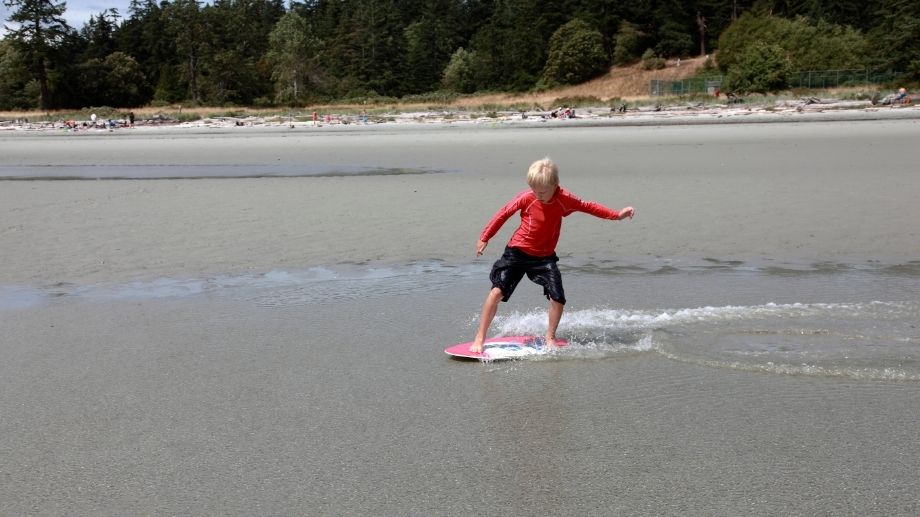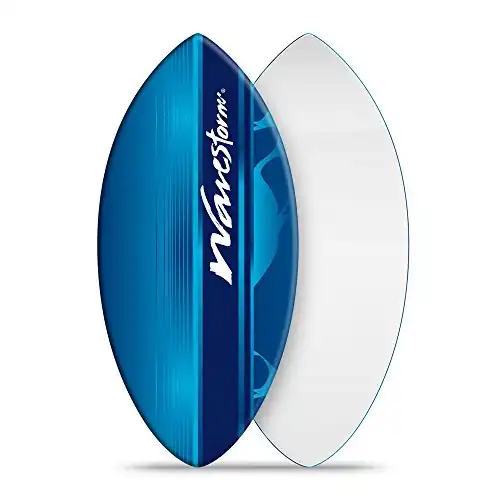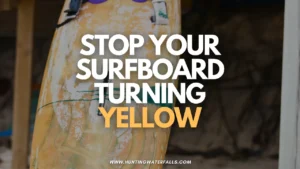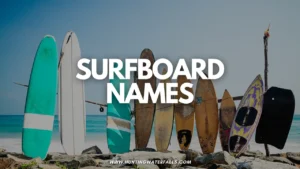Skimboarding can be a fun, active, and inexpensive way for your kids to spend a day at the beach. All they need is the shoreline, a board, and a little practice.
But what age is appropriate for kids to start learning to skimboard?
Kids can start flatland skimboarding around six years old. By that age, they’ll be likely to have the coordination, balance, and patience required to learn. For wave skimming, kids should be 11 or older because of the increased difficulty and risk involved.
Just keep in mind, skimboarding can be a dangerous activity. Kids should be competent swimmers, wear appropriate safety gear, and have constant supervision.
Below I’ll teach you why kids should be at least a certain age to skimboard and how to make it as safe as possible.
Skimboarding Requires More Coordination Than Younger Kids Have
Skimboarding (flatland skimming on lakes and rivers at least) may look pretty simple — just run and hop on your board.
But there’s a lot more to it than that.
Even for adults, skimboarding can be tough to learn. I've surfed for years and years and am a very competent surfer and even for me it was extremely difficult to pick up skimboarding to a level where I could ride waves.
My kids are 12, 10 and 7 and each of them has tried skimboarding so I have some experience with kids of different ages and the difficulties with teaching them skimboarding.
Hopping on your board is actually a pretty tough, multi-step technique called the one step drop (there are other kinds too, but this is the best place to start).
Once the drop is going well, centering your body weight on the board to keep your balance and not sink is a whole new challenge to overcome.
Kids who are too young are unlikely to have the balance and coordination needed for even the most basic skimming.
Skimboarding Takes A Lot Of Practice And Patience
Getting the hang of the body mechanics of the one step drop and the techniques needed to maintain balance on a skimboard require a lot of practice and patience to learn.
It’s not something that even the gnarliest pro skimboarders were able to learn in one day.
And as we all know, kids aren’t blessed with the most patience or the longest attention spans. The issue I had with my kids was they were able to run and skim a little bit across the water and it was fun for them, but continually practicing to get better wasn't something they were motivated to do.
Still for a day at the lake or the beach it's a fun activity that'll occupy your kids for an hour or so.
The younger the kid, the harder it will be for them to get to a point where skimboarding goes from learning to fun.
Skimboarding Can Be Dangerous For Kids
While flatland skimboarding is relatively safe for kids, any activity near the water has its dangers.
- It’s best that your kid is a competent swimmer. A life jacket isn’t a bad idea either for younger kids. Just in case.
- Falls are sure to happen. A rash guard will help prevent scrapes and scratches from falling on the sand. But expect some tough falls and the younger your kids are the more likely you are to have tears.
- Always have close, direct supervision at all times.
- Sunscreen. Never forget the sunscreen! Or swim in a rash guard for sun protection.
Because skimboarding is done in shallow water being a strong swimmer isn't a huge requirement, unless you're at the beach and they could get washed out to sea.
The biggest risks you have are falls. One of the biggest mistakes new skimboarders make is leaning back on the board and not centering their weight. This causes the board to FLY OUT in front of you and you fall solidly on your ass.
This type of fall is even more common in young children who do not has an much experience board riding. Some practice skateboarding, snow boarding or surfing will make skimboarding easier but even as an adults I've fallen in this way.
Catching waves whilst skimboarding is another story entirely.
For starters, high levels of speed are needed to reach waves at all. And, of course, the higher the speed the worse the slams.
What’s worse is that the best waves to catch on a skimboard are breaking hard into shallow surf. There’s a much higher risk of injury, sometimes serious, with skimming waves.
It’s best to wait until your kid is older before letting them try to catch waves — 11 or older is when it becomes reasonable to consider, unless you have an extremely dedicated child who loves the sport. With enough practice they can be riding waves at an even younger age.
Click here for the full guide on how to begin skimboarding onto waves.
How To Teach Skimboarding To Young Kids
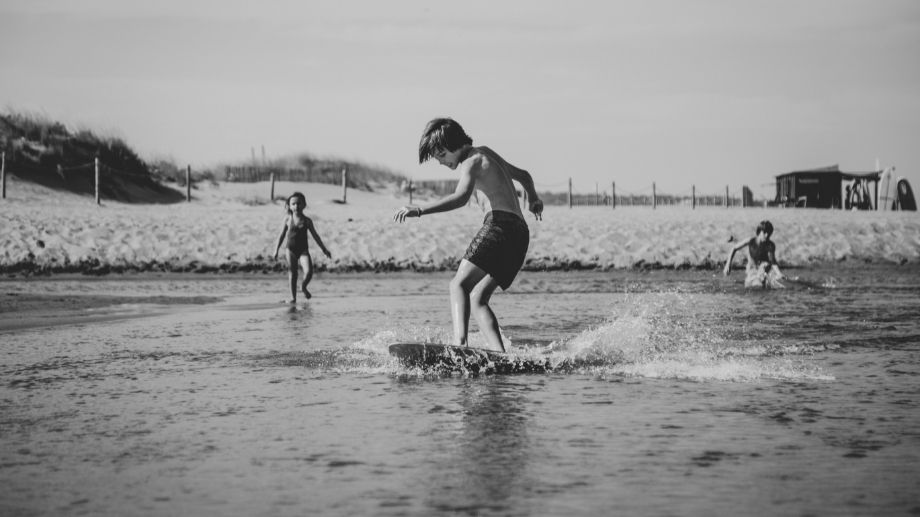
If you want to teach your kids to skimboard then there are a few pieces of advice I can give you which helped me a lot with my kids.
Get a Good Board
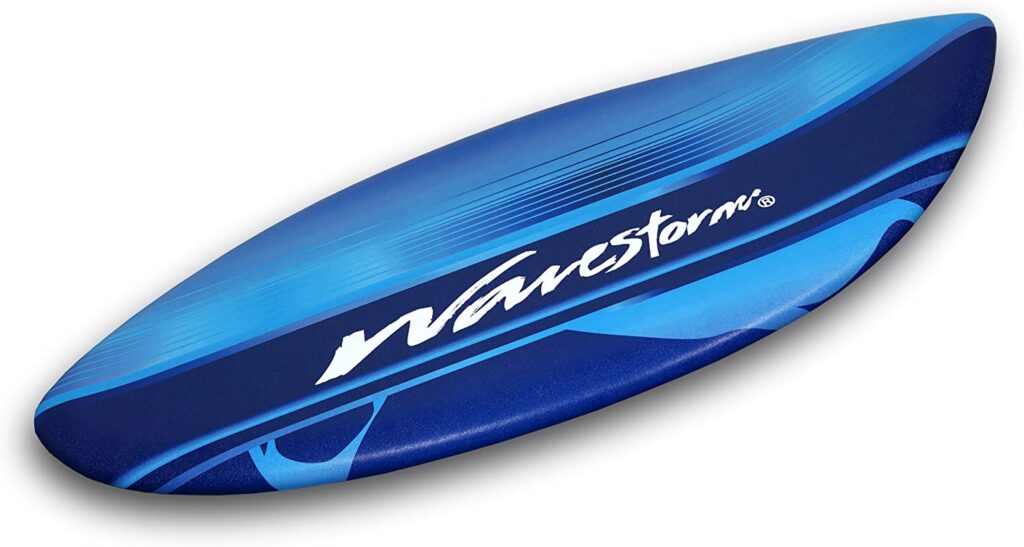
If you're just going to be using the skimboard once or twice a year then sure grab yourself a cheap wooden skimboard. However, just know these are much harder to skim on and much more difficult to learn on.
Foam skimboards are better than wooden skimboards because they have a larger surface area (for better skimming), float better and are also lighter and more rigid. All of this adds up to them being much easier to skim on.
Foam boards can be great for kids to learn on as they are softer as well which means less chance of injury.
You don't need to break the bank to get a good board in the beginning. Click here to see my list of the best skimboards for kids and there are options there for every price point.
A good cheap starter board for kids is the Wavestorm foam skimboard (at Amazon).
It's one of the cheapest options out there, comes in 45″ and 48″ sizes (which are great for kids) and it has a tough plastic bottom for fast skimming and a soft foam top to make it safe for kids to learn on.
This is one of the best beginner skimboards. It's an affordable board with a strong HDPE plastic base for fast skimming and a soft foam top for floatation, grip and to prevent injuries.
Start on Wet or Dry Sand
Before going straight onto water get your kids to practice running and jumping on the skimboard on wet or dry sand.
Try to find an area with a downward slope so gravity helps.
When they jump on the board teach them to lean forward and keep their weight centered over the board so they don't fall back.
You can also practice skimboarding on grass or carpet to get the technique down before hitting the water.
Hold The Board For Them
If your kids are ready to skim on the water rather than getting them to run, throw the board and try to land on it start by holding the board for them above the water.
They can run and jump on the board and you let go as they hit the board.
Get them to start slow and slowly build up speed.
Teach Them The One-Step Drop
The easiest way to get on a skimboard for beginners is to throw the board out in front of your, run after it and jump on it. But this loses you a lot of speed.
If your kid is serious about skimboarding you'll want to teach them the one-step drop.
This is a method when you run, drop the board as you take one step with your front foot and then step onto the board with your back foot. It's the best way to get on the board whilst maintaining speed.
Click here to read my full guide on how to skimboard properly and how to master the one-step drop.
Final Thoughts
Skimboarding is a great way to get your kids out in the sun, exercising, and having fun. But depending on their age, different types of skimboarding or skimboarding as a whole may not be appropriate.
| Flatland Skimboarding | Wave Skimming | |
| 0-5 years old | Not yet ready | Not safe |
| 6-10 years old | With close supervision | Not safe |
| 11+ years old | Good to go! | With close supervision |

